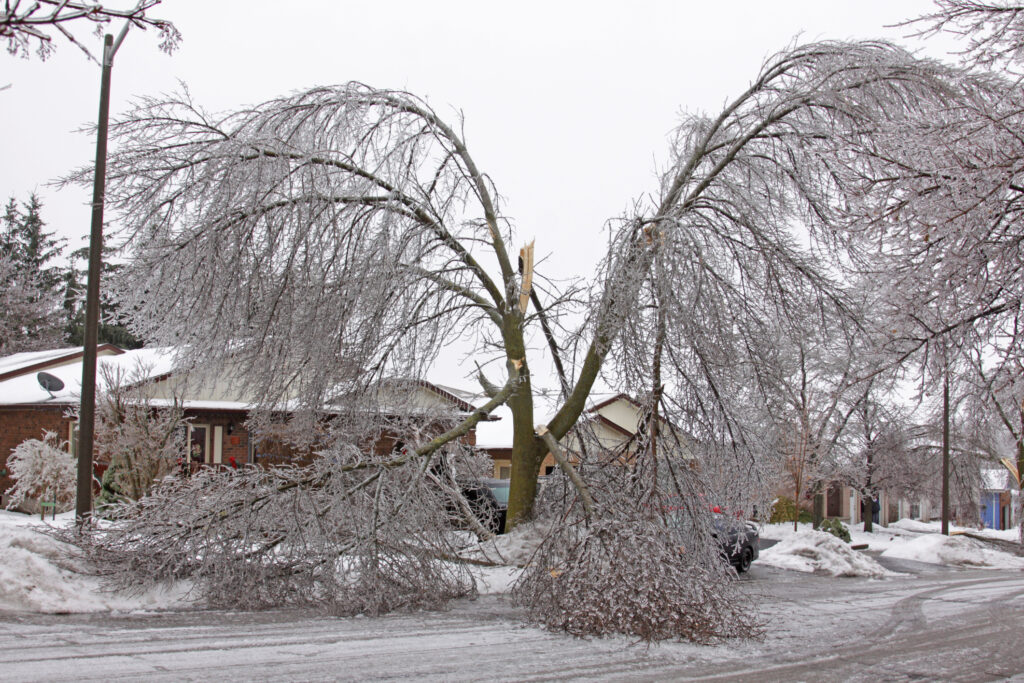Most of us do not enjoy the harsh winters and neither do plants. Once the temperature drops, you no longer see the greenery and all the leaves and blossoms disappear, only to return during springtime. Trees can suffer serious damage during winters due to fluctuating temperatures, heavy snow and ice storms, and low soil moisture. While some winter damage is normal, sometimes the damage can be extensive and irreversible. It is important to be proactive about tree care. A good place to start is to learn to identify the signs of damage and how to prevent and fix it.
Causes of winter tree damage
- Low or fluctuating temperatures: Very low temperatures that are below the tree’s tolerance can cause damage. Also, temperature fluctuations or sunscald can cause frost cracks on the sun-facing side of the tree.
- Weight of snow or ice on tree branches: Snowstorms can cause serious damage to your shrubs, conifers, and evergreen trees. Snow and ice can cause the branches to bend under their weight.
- Winter dryness: Low moisture content in the soil and air can create a damaging environment for the trees. It can cause winter burn in trees.
- Rodents and deer: Snowfall limits the availability of food for rodents and wildlife. This is the reason you see more girdling of branches and trees by animals.
Signs of winter tree damage
- Broken branches
- Brown foliage which is often a sign of frost damage
- Rodent damage-bark is usually stripped away
- Frost cracks on limbs and trunk
- Shoot death
- Root damage
- Plant death
These are just a few signs of winter tree damage. The damage could be temporary and the tree may come back to its original glory once conducive weather returns.
Preventing winter tree damage
A little care can go a long way in helping your trees survive harsh winters. Here are some things you can do to prevent winter tree damage:
- Choose hardy trees. Some species can better survive colder temperatures
- Avoid planting trees in area where temperatures could fluctuate. For example, planting trees near air vents can increase the likelihood of winter damage
- Proper winter pruning can prevent dead foliage and overgrowth from becoming weighed down by snow and ice
- Wrap or tie the tree branches together loosely and gently using strips of cloth or twine.
- Exercise caution when using de-icing salts. Before salting, remove as much snow and ice as possible from the sidewalks and driveways.
- Once the ground has thawed, irrigate the salt out of the soil around trees near roadways
- When snow accumulates on trees, gently shake it off or crush it with a broom
- Wrap the trunk of the tree in burlap to protect it from very low or fluctuating temperatures
- During dry periods, water your trees until the ground freezes
- Mulching your trees and shrubs can help conserve soil moisture and protect the roots from harsh cold
If you think your tree/trees have suffered winter damage, don’t hesitate to get in touch with our expert team. Call us if you see any broken limbs or branches, crack in the branches or trunk, loss of any portion of the crown, or if your tree is leaning. Our team can properly prune your damaged trees and remove the tree, if required. It is advisable that you have your trees professionally pruned before the onset of winters, so that they are lean and better able to withstand the low temperatures.

